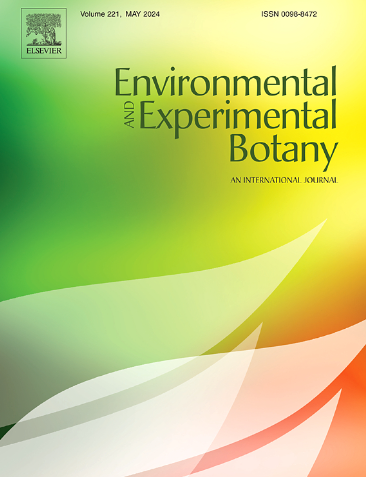多组学分析揭示黄连木和黄连木衰老叶基因型依赖性代谢和转录差异
IF 4.7
2区 生物学
Q2 ENVIRONMENTAL SCIENCES
引用次数: 0
摘要
叶片颜色分化是植物衰老过程中代谢重编程和适应性策略整合的表型标志。然而,不同颜色衰老叶片的代谢和转录组学变化尚未得到系统的阐明。本研究调查了黄色和橙色衰老的叶子黄连木对使用集成的转录组,有针对性的代谢组学和生物信息学分析揭示表型差异的核心机制。黄萎病树叶片具有WRKY和NAC转录因子激活的特征。相比之下,橙衰老树的叶片依赖于r2r3 - myb调控的类黄酮生物合成。参与类胡萝卜素前体生物合成和降解的基因被上调,表明这些过程的平衡是通过潜在的反馈调节机制维持的。代谢组学分析表明,与黄色叶片相比,橙色叶片中的黄酮类化合物含量显著较高,而黄色叶片则表现出叶黄素主导的代谢模式。这些发现为植物衰老过程中叶片颜色多样性的适应进化理论提供了数据支持。本文章由计算机程序翻译,如有差异,请以英文原文为准。
Unraveling genotype-dependent metabolic and transcriptional differences between yellow and orange senescent leaves of Pistacia chinensis via multi-omics analysis
Leaf color differentiation during plant senescence is a phenotypic hallmark of metabolic reprogramming and adaptive strategy integration. However, the metabolic and transcriptomic changes in senescent leaves of different colors have not been systematically elucidated. This study investigated yellow and orange senescent leaves of Pistacia chinensis using integrated transcriptomics, targeted metabolomics, and bioinformatics analyses to reveal the core mechanisms underlying phenotypic divergence. Leaves from yellow-senescing trees are characterized by the activation of WRKY and NAC transcription factor. In contrast, leaves from orange-senescing trees relied on R2R3-MYB-regulated flavonoid biosynthesis. The genes involved in the biosynthesis and degradation of carotenoid precursors were upregulated, suggesting that the balance of these processes was maintained through a potential feedback regulatory mechanism. Metabolomic profiling indicated significantly higher levels of flavonoids in orange leaves compared to their yellow counterparts, while yellow leaves exhibited lutein-dominated metabolic patterns. These findings offer data-supported insights into the adaptive evolution theory concerning leaf color diversity during plant senescence.
求助全文
通过发布文献求助,成功后即可免费获取论文全文。
去求助
来源期刊

Environmental and Experimental Botany
环境科学-环境科学
CiteScore
9.30
自引率
5.30%
发文量
342
审稿时长
26 days
期刊介绍:
Environmental and Experimental Botany (EEB) publishes research papers on the physical, chemical, biological, molecular mechanisms and processes involved in the responses of plants to their environment.
In addition to research papers, the journal includes review articles. Submission is in agreement with the Editors-in-Chief.
The Journal also publishes special issues which are built by invited guest editors and are related to the main themes of EEB.
The areas covered by the Journal include:
(1) Responses of plants to heavy metals and pollutants
(2) Plant/water interactions (salinity, drought, flooding)
(3) Responses of plants to radiations ranging from UV-B to infrared
(4) Plant/atmosphere relations (ozone, CO2 , temperature)
(5) Global change impacts on plant ecophysiology
(6) Biotic interactions involving environmental factors.
 求助内容:
求助内容: 应助结果提醒方式:
应助结果提醒方式:


